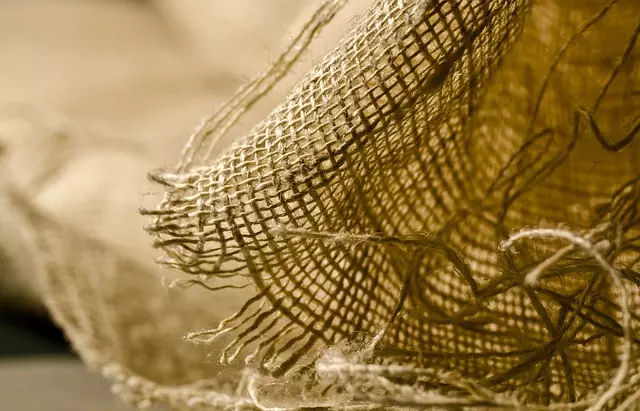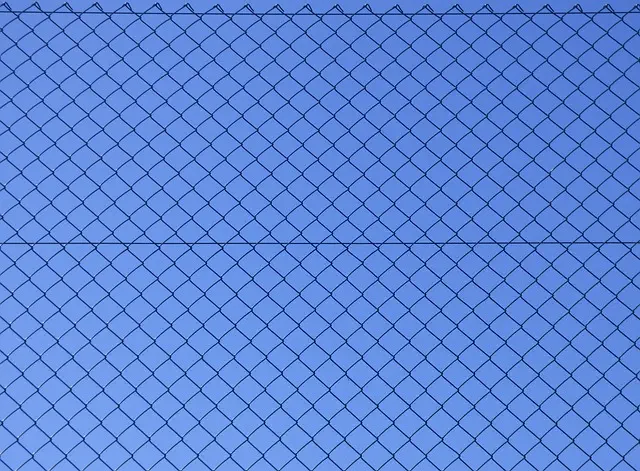Muscle soreness, known as Delayed Onset Muscle Soreness (DOMS), can occur after unaccustomed or intense physical activity, typically emerging 24 to 72 hours post-exercise. The article explores the physiological basis of DOMS and emphasizes the importance of understanding it for effective recovery strategies. It discusses how natural supplements like Gold Bali Kratom and Red Bali Kratom may aid in managing muscle soreness, attributing this potential benefit to their alkaloid composition—mitragynine and 7-hydroxymitragynine—which may interact with opioid receptors for analgesic effects. The article cautions users to consult healthcare professionals before using Kratom due to individual sensitivity and legal considerations, and it underscores the need for personalized approaches. It highlights Gold Bali Kratom's balanced alkaloid profile offering both energizing and calming effects, which can be beneficial post-workout, and Red Bali Kratom's sedative qualities that may reduce inflammation and promote deeper sleep essential for muscle repair. Both strains have their unique advantages for managing muscle soreness, and the choice between them should be informed by personal tolerance and the timing of use in relation to exercise. The article also advises on incorporating a balanced diet, hydration, and targeted exercises into a recovery regimen, with Gold Bali Kratom versus Red Bali Kratom being key considerations for those looking into herbal remedies for muscle soreness management.
Embarking on a fitness journey often brings about muscle soreness, a natural response to intense exercise. This article delves into tailored workout strategies that not only mitigate discomfort but also harness the potential of Kratom varieties, particularly Gold Bali and Red Bali, for enhanced recovery. We’ll explore the causes of muscle soreness, examine how Kratom can play a role in your recovery process, and provide a framework for a personalized workout regimen that complements Kratom use. Whether you’re a seasoned athlete or a casual gym-goer, understanding how to integrate these approaches can significantly alleviate muscle soreness and keep you on track with your fitness goals.
- Understanding Muscle Soreness and Its Causes
- The Role of Kratom in Muscle Recovery: Gold Bali vs Red Bali
- Designing a Customized Workout Plan for Sore Muscles
- Integrating Kratom Use with Exercise for Optimal Relief
- Complementary Strategies for Alleviating Muscle Soreness
Understanding Muscle Soreness and Its Causes

Muscle soreness, commonly referred to as Delayed Onset Muscle Soreness (DOMS), is a physiological response to unaccustomed or intense physical activity. It typically manifests 24 to 72 hours post-exercise and can range from mild discomfort to severe pain. The intensity of soreness can vary based on several factors, including the type of exercise performed, the intensity of the workout, and individual differences in muscle composition and function. Understanding the underlying mechanisms of muscle soreness is crucial for effective recovery and maintaining a consistent training regimen.
When it comes to managing muscle soreness, natural supplements like Gold Bali Kratom and Red Bali Kratom have gained attention for their potential pain-relieving effects. Both strains are known for their alkaloid profile, with mitragynine and 7-hydroxymitragynine being the most prominent. These compounds may interact with opioid receptors in the brain to produce analgesic (pain-killing) effects, which could help alleviate muscle soreness. However, it’s important to approach the use of such supplements with caution and consider individual sensitivity, as well as potential legal restrictions in your region. Always consult with a healthcare professional before incorporating Kratom into your recovery routine to ensure safety and appropriateness for your specific situation.
The Role of Kratom in Muscle Recovery: Gold Bali vs Red Bali

When addressing muscle soreness, individuals often seek natural remedies that can complement traditional recovery methods. Among the alternative options gaining attention is Kratom, a plant native to Southeast Asia with various strains, each with distinct properties. Two of the most popular strains for muscle recovery are Gold Bali and Red Bali Kratom.
Gold Bali Kratom is known for its balanced alkaloid profile, which may provide both stimulating and soothing effects. Alkaloids such as 7-hydroxymitragynine and mitragynine, present in Gold Bali, are believed to interact with the body’s opioid receptors, potentially offering pain relief and muscle relaxation. This can be particularly beneficial for individuals experiencing post-workout soreness. The Gold Bali strain is often favored for its ability to enhance mood and energy levels, which may assist in maintaining an active lifestyle without exacerbating muscle discomfort.
On the other hand, Red Bali Kratom is celebrated for its sedative properties, which can aid in reducing inflammation and promoting deeper sleep. Adequate rest is crucial for muscle repair and growth, and Red Bali may support this process by facilitating a more relaxed state conducive to recovery. Its higher levels of mitragynine compared to other alkaloids make it a preferred choice for those seeking relief from chronic pain and soreness. Users often report that Red Bali helps in managing discomfort without the side effects associated with conventional pain medication, making it a valuable addition to a holistic muscle recovery regimen. Both strains have their unique benefits; however, the choice between Gold Bali and Red Bali Kratom should be made based on individual needs and preferences, as well as guidance from healthcare professionals.
Designing a Customized Workout Plan for Sore Muscles

When addressing muscle soreness through a customized workout plan, it’s crucial to balance activity with recovery. For individuals exploring natural supplementation to enhance their recovery process, products like Gold Bali Kratom and Red Bali Kratom have gained attention for their potential analgesic properties. Gold Bali Kratom is often praised for its well-rounded effects, providing a gentle energy boost alongside pain relief, which can be particularly beneficial for those recovering from intense workouts. On the other hand, Red Bali Kratom is known for its sedative qualities, offering relief that may help in managing soreness without overstimulating the body. Incorporating these into a workout routine should be done with caution and in accordance with one’s unique physiology, as individual responses to kratom can vary significantly.
When designing a workout plan for those experiencing muscle soreness, it’s essential to focus on low-impact exercises that target different muscle groups, allowing for adequate recovery time. The inclusion of flexibility and mobility work, such as yoga or stretching, can be highly beneficial in alleviating tension and improving range of motion. Strength training with light to moderate resistance can also aid in muscle repair by stimulating blood flow and promoting healing. It’s important to tailor the intensity and volume of these exercises based on the individual’s pain levels, ensuring that each session contributes to recovery rather than exacerbates soreness. Additionally, incorporating rest days is vital for allowing muscles to heal and for the kratom effects to be optimized. This balanced approach can lead to a more effective recovery process and a sustainable long-term workout routine for those managing muscle soreness.
Integrating Kratom Use with Exercise for Optimal Relief

Integrating Kratom into a workout regimen can be a nuanced approach for those seeking muscle soreness relief. Kratom, a plant-based mitragynine speciosa, has been used traditionally in Southeast Asia for its various effects. When it comes to alleviating muscle soreness, two prominent strains of Kratom often considered are Gold Bali and Red Bali. Gold Bali Kratom is known for its invigorating and energizing properties, which can be beneficial before a workout to enhance performance and endurance. Conversely, Red Bali Kratom is recognized for its soothing effects, making it an ideal choice post-exercise for muscle relief and recovery.
The synergy between Kratom and exercise for muscle soreness relief lies in the balance of stimulation and relaxation. Gold Bali can help users push through intense workouts without feeling overly fatigued, while Red Bali can ease the aches and pains that often accompany muscle exertion. It’s important to note the differences between these strains: Gold Bali may offer a more uplifting experience, whereas Red Bali is often associated with a calming sensation that can be particularly effective for post-exercise recovery. Users should carefully consider their activity levels and individual response to Kratom, as dosage and timing are key to optimizing its effects for relief. Consultation with healthcare professionals is recommended before integrating Kratom into any fitness or wellness routine to ensure safety and efficacy.
Complementary Strategies for Alleviating Muscle Soreness

When managing muscle soreness, a tailored workout plan that incorporates complementary strategies can significantly aid in alleviating discomfort and promoting recovery. Engaging in low-impact activities such as swimming or cycling can help maintain muscle function without exacerbating existing soreness. Additionally, incorporating stretching and mobility exercises into your routine can enhance flexibility and reduce tension in the affected muscles. For those exploring natural supplements, Gold Bali Kratom and Red Bali Kratom are often compared for their potential pain-relieving properties. Users may find that Gold Bali Kratom, known for its balance of stimulating and soothing effects, can provide relief from soreness while maintaining energy levels. On the other hand, Red Bali Kratom is typically favored for its calming and analgesic effects, which can be beneficial for relaxation and pain management post-workout. It’s advisable to consult with a healthcare professional before incorporating these supplements into your regimen, as they can interact with medications and individual physiology varies.
Furthermore, proper nutrition plays a crucial role in muscle recovery and soreness relief. Consuming a diet rich in antioxidants, omega-3 fatty acids, and proteins can support muscle repair and inflammation reduction. Hydration is equally important, as adequate fluid intake helps to flush out metabolic waste from the muscles, aiding in the healing process. In conjunction with your workout plan, these complementary strategies can create a holistic approach to managing muscle soreness effectively.
In conclusion, muscle soreness can be a persistent challenge for those committed to maintaining an active lifestyle. Understanding the origins of this discomfort is crucial for addressing it effectively. The article has explored various facets of muscle soreness, including its causes and the multifaceted role of Kratom, particularly Gold Bali versus Red Bali, in facilitating recovery. By designing a customized workout plan tailored to individual needs, incorporating strategic Kratom use, and complementing these approaches with additional recovery strategies, individuals can alleviate muscle soreness and enhance their overall well-being. It’s clear that with the right combination of physical activity and natural supplementation like Kratom, relief from muscle soreness is attainable, allowing for continued progress in one’s fitness journey.






